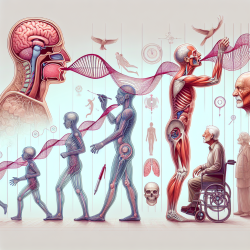Unlocking Speech Potential: The Sigma-Lognormal Way!
Speech therapy is an ever-evolving field, and as practitioners, it's crucial to stay updated with the latest research and methodologies. One such groundbreaking approach is the Sigma-Lognormal Modeling of Speech, which offers a novel way to understand and enhance speech kinematics.
What is Sigma-Lognormal Modeling?
The Sigma-Lognormal model, originally applied in handwriting analysis, has now been adapted to speech kinematics. This model helps in understanding the complex movements involved in speech production by breaking them down into simpler components. It provides a framework to study, analyze, and reconstruct speech movements, offering insights into the neuromuscular responses involved in speech.
Why is it Important for Practitioners?
For speech therapists and educators, the Sigma-Lognormal model opens up new avenues for diagnosing and treating speech-related issues. By understanding the kinematic patterns of speech, practitioners can tailor interventions more effectively. This model is particularly useful in identifying age-related changes in speech and distinguishing between healthy speech patterns and those affected by neuromotor disorders.
Key Findings from the Research
- The Sigma-Lognormal model successfully links speech kinematics to neuromuscular responses, providing a detailed understanding of speech production.
- It highlights the impact of aging on speech, showing that older adults tend to have slower speech movements, which can be quantified using this model.
- The model also distinguishes between speech affected by neuromotor disorders and healthy speech, offering a diagnostic tool for practitioners.
Practical Applications
Implementing the Sigma-Lognormal model in practice can lead to significant improvements in speech therapy outcomes. Here are some ways practitioners can utilize this model:
- Assessment and Diagnosis: Use the model to assess speech kinematics in patients, identifying deviations from typical patterns.
- Customized Therapy Plans: Develop personalized therapy plans based on the specific kinematic patterns of each patient.
- Monitoring Progress: Track changes in speech kinematics over time to monitor the effectiveness of therapy interventions.
Encouraging Further Research
While the Sigma-Lognormal model offers promising insights, there's still much to explore. Practitioners are encouraged to delve deeper into this model, conducting further research to refine its applications in speech therapy. By collaborating with researchers and sharing findings, the community can enhance the model's effectiveness and broaden its impact.
To read the original research paper, please follow this link: Sigma-Lognormal Modeling of Speech.










